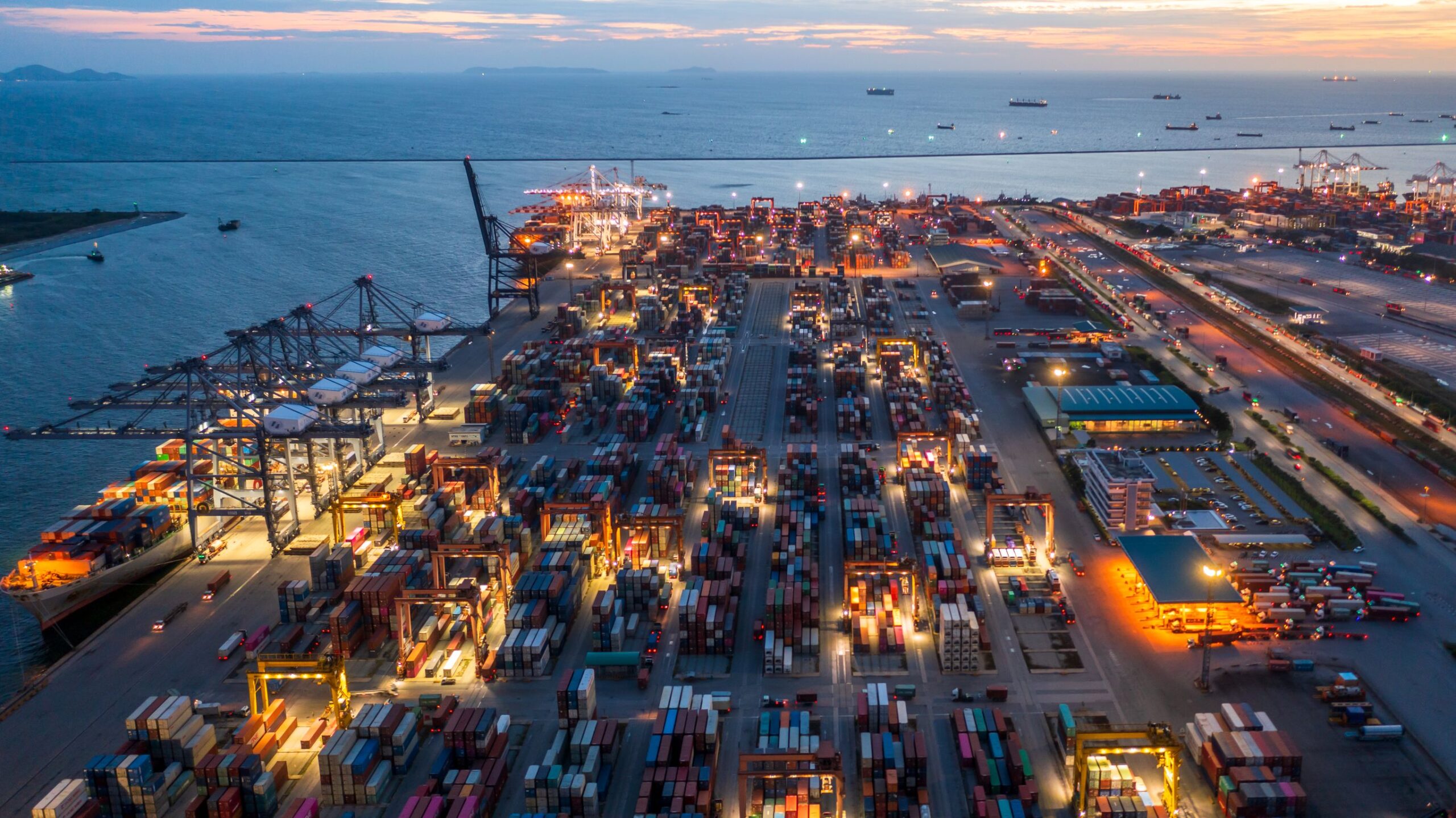The freight industry is at a pivotal crossroads in 2025 as reshoring and nearshoring freight redefine how businesses manage their supply chains. These strategies—reshoring, the process of bringing manufacturing back to a company’s home country, and nearshoring, which involves relocating production to nearby countries—are transforming logistics frameworks and freight operations worldwide.
This shift addresses the challenges of global disruptions, rising costs, and a growing emphasis on supply chain resilience. For freight providers, the implications of reshoring and nearshoring freight are significant, presenting both challenges and opportunities in an increasingly dynamic landscape.
What’s Driving Reshoring and Nearshoring in 2025?
The movement towards reshoring and nearshoring freight has been gaining momentum in recent years due to several global factors. By examining these driving forces, we can better understand their influence on freight strategies.
1. Supply Chain Disruptions
The COVID-19 pandemic underscored the vulnerabilities of global supply chains. Dependence on distant manufacturing hubs made companies susceptible to delays, shortages, and rising shipping costs. Reshoring and nearshoring freight provide businesses with closer, more predictable sources that can mitigate these risks.
2. Rising Labor and Manufacturing Costs
Manufacturing in traditionally low-cost regions like Asia is becoming more expensive due to inflation and rising wages. By relocating production closer to home, businesses can avoid long-distance freight costs while gaining greater control over expenses.
3. Environmental Pressures
Sustainability is no longer optional. Governments and customers are demanding lower carbon emissions from every stage of the supply chain, including freight. Shortening the distance between production hubs and end-users through reshoring or nearshoring can significantly reduce the environmental impact of transportation.
4. Geopolitical Tensions
Trade wars, tariffs, and shifting policies have added uncertainties to global supply chains. Companies are increasingly navigating these challenges by diversifying production locations, relying on reshoring and nearshoring to secure their operations.
The Impact on Freight Strategies
Reshoring and nearshoring are reshaping how freight businesses operate. From changes in volume to adjustments in infrastructure, here’s how the industry is adapting:
1. Increased Regional Freight Demand
With production facilities relocating closer to major markets, freight providers are seeing a surge in reshoring and nearshoring freight distribution needs. For example, a shift from Asian factories to U.S.-based or Mexican manufacturers results in more short-haul and domestic freight routes.
2. Changes in Port Usage
Reshoring and nearshoring mean less reliance on long-haul ocean freight. While ports remain critical for imports of raw materials, completed goods are often transported via land or air within smaller regions. Ports and freight companies must focus on handling these new patterns efficiently.
3. Warehousing and Fulfillment
Freight providers must also address the increased demand for warehousing networks closer to manufacturing hubs. Businesses will need to build or partner with facilities that can support rapid order fulfillment while accommodating fluctuating inventory levels.
4. Technology-Driven Logistics
The complexity of multiple, smaller regional supply chains has pushed freight companies to adopt advanced technologies. Digital freight platforms, AI-powered route optimization, and real-time tracking are becoming essential for managing reshoring and nearshoring operations efficiently.
Challenges Freight Companies Face
While reshoring and nearshoring freight create opportunities, they also present significant challenges for freight companies:
Infrastructure Development
Smaller or regional freight networks often require investments in infrastructure. Developing new hubs, optimizing routes, and upgrading fleets can be costly in the short term but necessary for adapting to reshoring and nearshoring demands.
Capacity Management
The shift towards regional manufacturing spreads logistics capacities across new areas, sometimes away from established networks. Freight providers must reassess whether they have the fleet size and capability to accommodate these shifts.
Regulatory Complexities
Reshoring and nearshoring freight operations closer to home doesn’t eliminate regulatory concerns—it simply changes them. Different states or countries may have varying shipping, labor, and environmental regulations. Freight companies must remain agile in navigating these complexities.
Competition and Adaptation
Freight providers aren’t just competing with traditional rivals anymore. New players, often from within local markets, are entering the scene, forcing existing companies to differentiate through better service, technology, or pricing.
Opportunities in Reshoring and Nearshoring for Freight Providers
Despite these challenges, reshoring and nearshoring open doors to growth. Successful companies can leverage these shifts to strengthen their value propositions.
Expansion of Regional Networks
This trend allows freight companies to expand into untapped local markets. Partnering with manufacturers reshoring and nearshoring freight creates opportunities to establish profitable regional logistics operations.
Customization and Agility
Freight companies can provide value by offering flexible, tailored solutions that address the specific needs of nearshore and reshored manufacturers. When it comes to reshoring and nearshoring freight, quick deliveries, high levels of customer service, and tech integrations are strong differentiators.
Sustainability Initiatives
Shorter freight distances align naturally with sustainability goals. Freight companies investing in low-emission vehicles or carbon offset programs can market themselves as eco-friendly partners for manufacturers.
Strategic Collaboration
Collaborating with nearshore logistics hubs, suppliers, or technology providers can create seamless solutions for reshoring manufacturers. Partnerships reduce overhead while offering comprehensive service portfolios, streamlining reshoring and nearshoring freight operations.
Industries Leading the Shift
Certain industries are adopting reshoring and nearshoring faster than others, which has implications for freight strategies. Some prominent sectors include:
- Automotive: Manufacturers aim to reduce exposure to global disruptions, making nearshoring in markets like Mexico increasingly attractive.
- Electronics: Better control of inventory and closer proximity to end markets are driving reshoring trends in the tech sector.
- Pharmaceuticals: Stringent quality and safety requirements lead pharmaceutical companies to bring production closer to home.
- Textiles: Rising overseas costs and supply chain delays have prompted clothing brands to consider reshoring their operations.
Freight companies focusing on these industries may find lucrative opportunities to secure long-term partnerships.
Tools and Strategies for Success
To thrive in the reshoring and nearshoring freight landscape, freight companies must adopt proactive strategies that address both current and future needs:
- Invest in Technology
Upgrade systems to provide end-to-end visibility, enhance operational efficiency, and deliver data-driven decisions.
- Focus on Collaboration
Build integrated solutions by partnering with key players in nearshore hubs, including third-party logistics providers.
- Train Teams for Market Trends
Equip teams with knowledge about reshoring and nearshoring dynamics to provide better service and insights for clients.
- Adapt Fleets and Infrastructure
Ensure fleets and other resources are optimized for regional and short-haul routes.
- Prioritize Customer Relationships
Position your business as a trusted freight solutions partner through customized offerings and transparent communication.
Looking Ahead
The logistics landscape in 2025 is being reshaped by the rapid adoption of reshoring and nearshoring strategies. This shift is redefining freight operations, pushing companies to adapt to regional supply chains, invest in digital solutions, and rethink traditional infrastructure.
Freight providers that can respond with flexibility, innovation, and sustainability in reshoring and nearshoring freight will gain a competitive edge. By understanding evolving customer needs and positioning themselves as integral partners to reshoring and nearshoring efforts, logistics companies can thrive in this new era.




